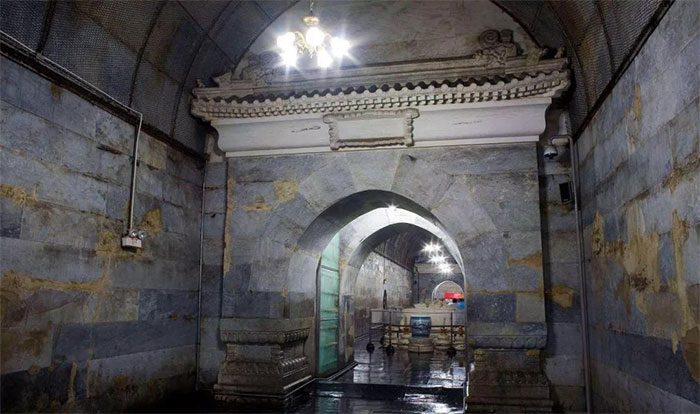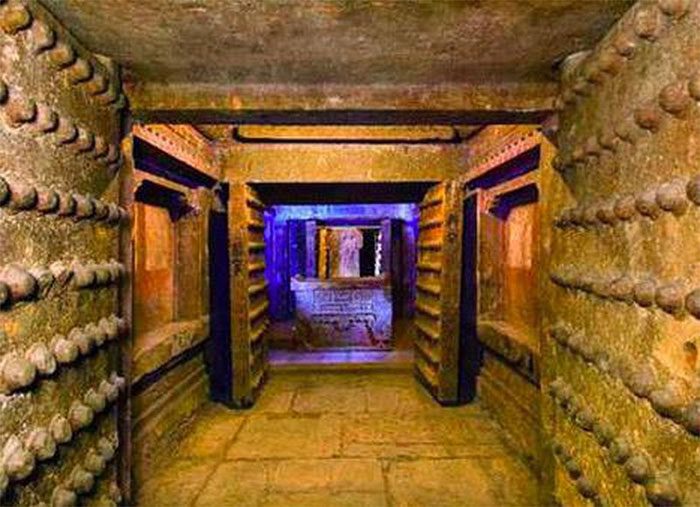As we know, ancient emperors placed great importance on constructing tombs. They began building their mausoleums soon after ascending to the throne. Some may wonder why, when they are young and healthy, they would think about building a tomb. Isn’t this a bad omen?
However, ancient emperors believed that as long as the tomb was grand and magnificent, they could continue to live in luxury even after death. For this reason, most royal and noble tombs from ancient times contained many valuable treasures, hoping that the deceased could enjoy prosperity in the afterlife.

Most royal and noble tombs from ancient times contained many treasures. (Illustrative image).
Moreover, due to the lack of advanced technology at the time, which made mechanization impossible, tomb construction relied heavily on human labor. From selecting the site, designing, gathering workers, preparing funds, to finally constructing the tomb, each step took a considerable amount of time. Therefore, ancient emperors often began contemplating their mausoleum construction immediately upon taking the throne.
Many people might wonder, once the underground tomb is constructed and sealed, how do the last workers escape?
According to Records of the Grand Historian by Sima Qian, after Qin Shi Huang died, Qin Er Shi buried him in the mausoleum that Qin Shi Huang had built for himself during his lifetime. Fearing that the secrets within the tomb would be exposed by the workers, Qin Er Shi ordered the secret execution of all those involved in the construction. These individuals were confined and suffocated underground.

Many emperors secretly ordered the execution of all those involved in the construction of their tombs. (Illustrative image).
In fact, not only Qin Shi Huang, but many ancient emperors used this method to hide the secrets of their underground tombs. They all feared that gold and jewels would be stolen.
To prevent the design of the tomb from being revealed and to avoid being blinded by wealth, most workers who held critical secrets of the tomb were either murdered or buried alongside the deceased. Some craftsmen understood the fate of their predecessors and realized that they could not escape death, so they sought a way to survive.
First, let’s examine the construction of the gates of the Ming Dynasty tombs to understand how the craftsmen could escape.
Emperor Shenzong of the Ming Dynasty and his two empresses were buried in the Ming Ding Tomb. This is also the only tomb among the thirteen royal tombs at the Thirteen Tombs of the Ming Dynasty that has been excavated.

Some craftsmen realized they could not escape death, so they sought a way to survive. (Illustrative image).
After the establishment of the People’s Republic of China, figuring out how to access the Ming Ding Tomb became a challenging problem for archaeologists. From the outside, the underground tomb gate is completely locked from the inside. Using explosives would cause severe damage to the site.
However, archaeologists suddenly had an idea: “If no one locked it from the inside, the craftsmen certainly could have used some mysterious mechanism to close the gate. Things may not have been as previously assumed, that after the gate was locked, all the craftsmen suffocated inside.”
This is the key point that reveals the wisdom of these craftsmen. It is the method of using the weight of a stone to block the gate.
When closing the tomb gate, after ensuring that everyone inside had completely exited, the craftsmen took advantage of the natural slope and gravity to position a stone in such a way that it fit snugly against the locking beam of the gate, effectively using the stone’s weight to hold the door closed.

The “automatic stone” mechanism.
The tomb gate used a type of stone known as “automatic stone” to secure it firmly. The craftsmen designed a small groove in the ground. After placing the “automatic stone” in that groove, they leaned the stone against the gate and gradually closed it. If someone outside did not understand this mechanism, it would be very difficult to open.
These craftsmen utilized this method to avoid the tragic fate of being buried alive underground. At that time, they had learned to leverage gravity and could also roughly estimate the speed and time of the stone’s descent, which helped them quickly escape from the underground tomb.


















































